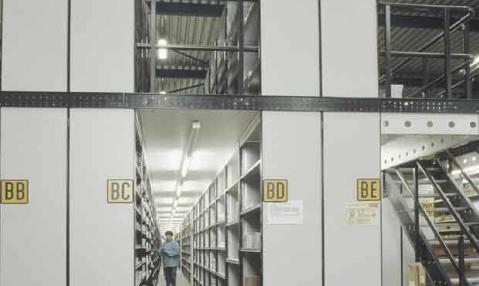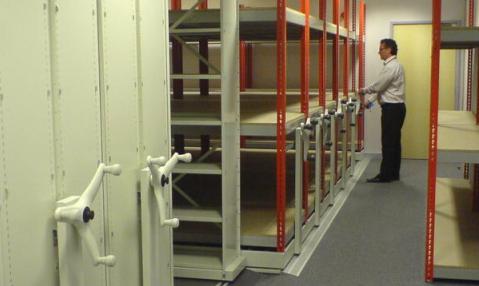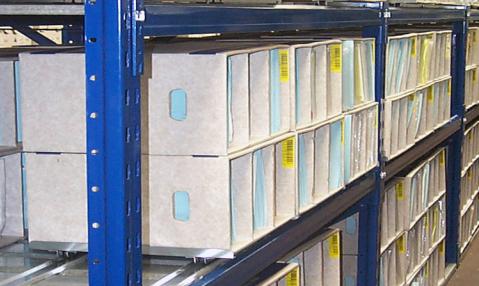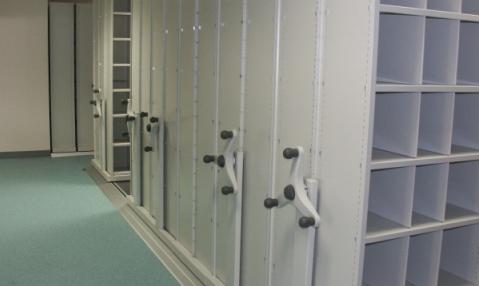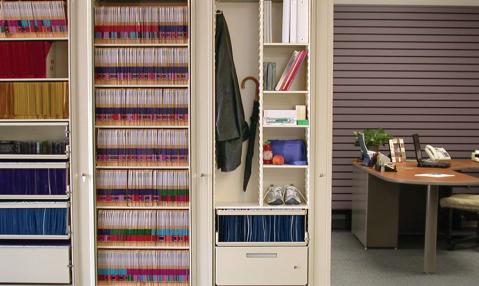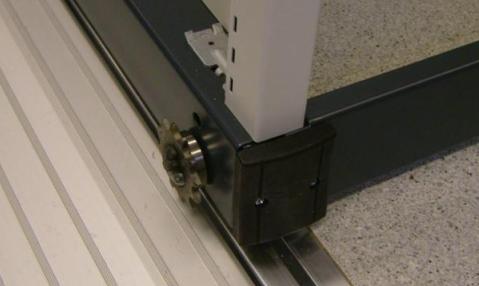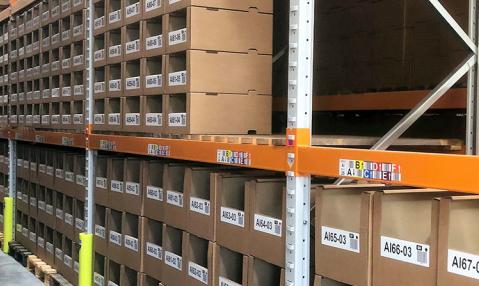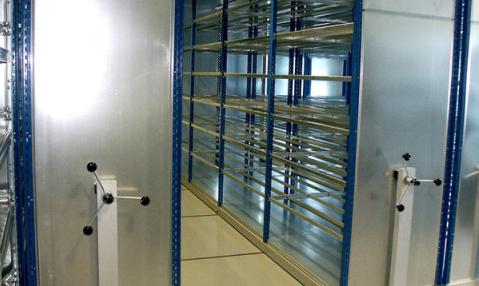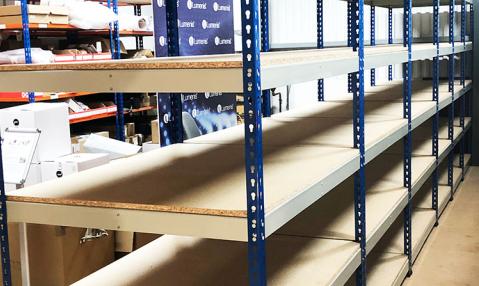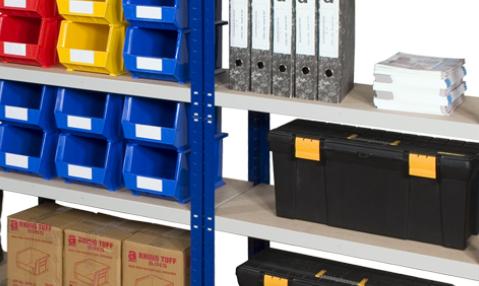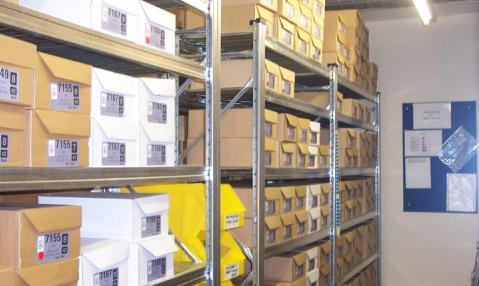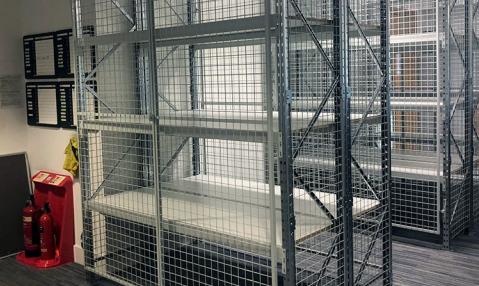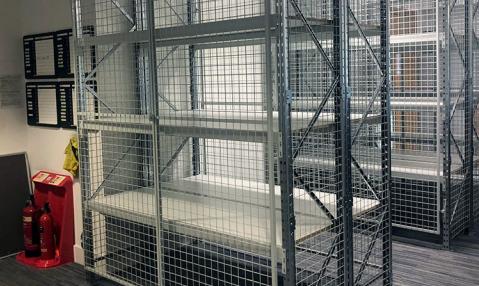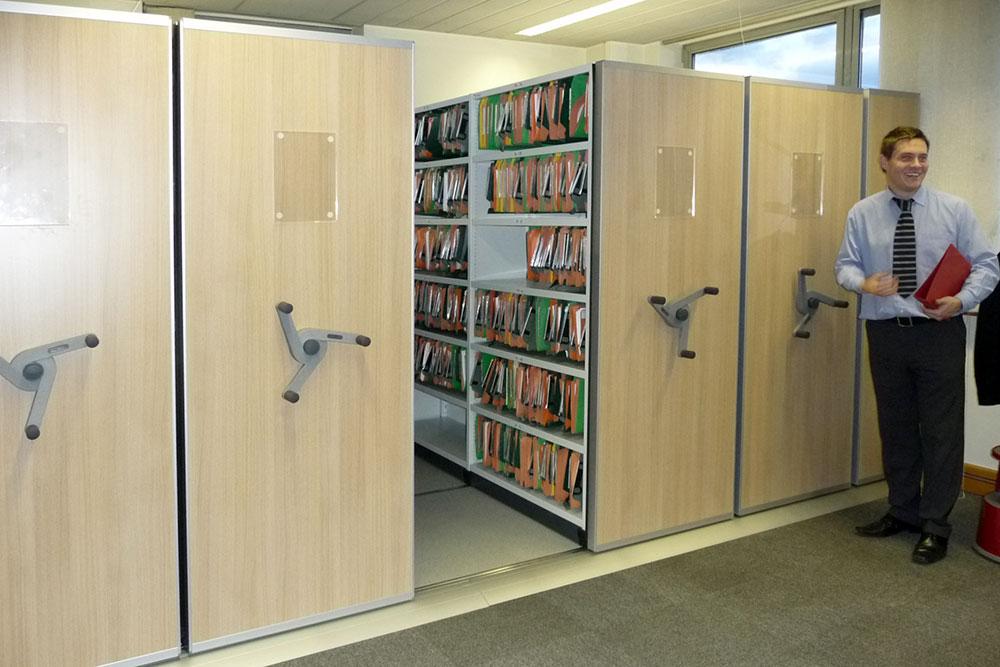
What is high density storage?
In its most simplistic term is a way of getting more storage of anything in a smaller space.
We generally compare high density storage against traditional static storage. And try to use additional space in the length, width, and height not used to get more storage into the area.
It generally involves putting the existing storage on
1) Mobile bases or moving aisle mobiles that reduce the number of aisles from say 5 to 1 aisle. The 4 replaced aisles converted into more storage. This is the most popular and more economical. Used in a larger archive to smaller storerooms.
2) Glide-a-side bases that allow cabinets to slide in front of each other. Cupboards can be 2, 3 cabinets deep and 5 bays long. Called a 5 x 4 for example 5 units at the back and 4 single units moving in front. Can be 4 x 3, 3 x 2 etc Typically found along walls or wide corridors, with cabinets shelving with doors mounted on them. Effective but generally more costly the tradition l moving aisle.
3) Spinning cabinets. Two cabinets back to back on a spinning base. When open the shelves are made available and when spun 90 degrees the closed sides act as lockable doors.
4) Changing existing storage cupboard or filing cabinet to higher storage units that allows more to be stored vertically. Also tailoring the unit’s depth to fix exactly the file or box storage.
5) Mounted existing units on mobile bases.
6) Mobile storage mounted on raised storage platforms or mezzanine floors
7) And of course many shades of grey in between. High density storage is a compromise between capacity and accessibility. The greater the capacity the accessibility decreases. High-density mobile storage solves all of these challenges and offers added benefits to any organization in terms of better working atmosphere, less clutter, more organization, greater security and workflow efficiencies
